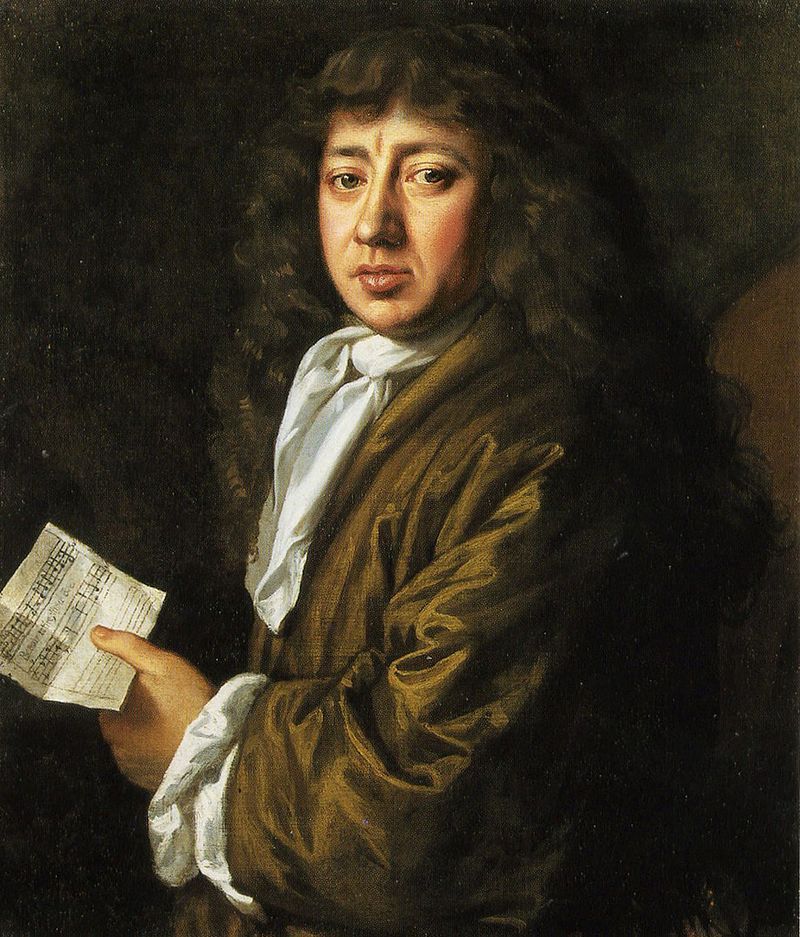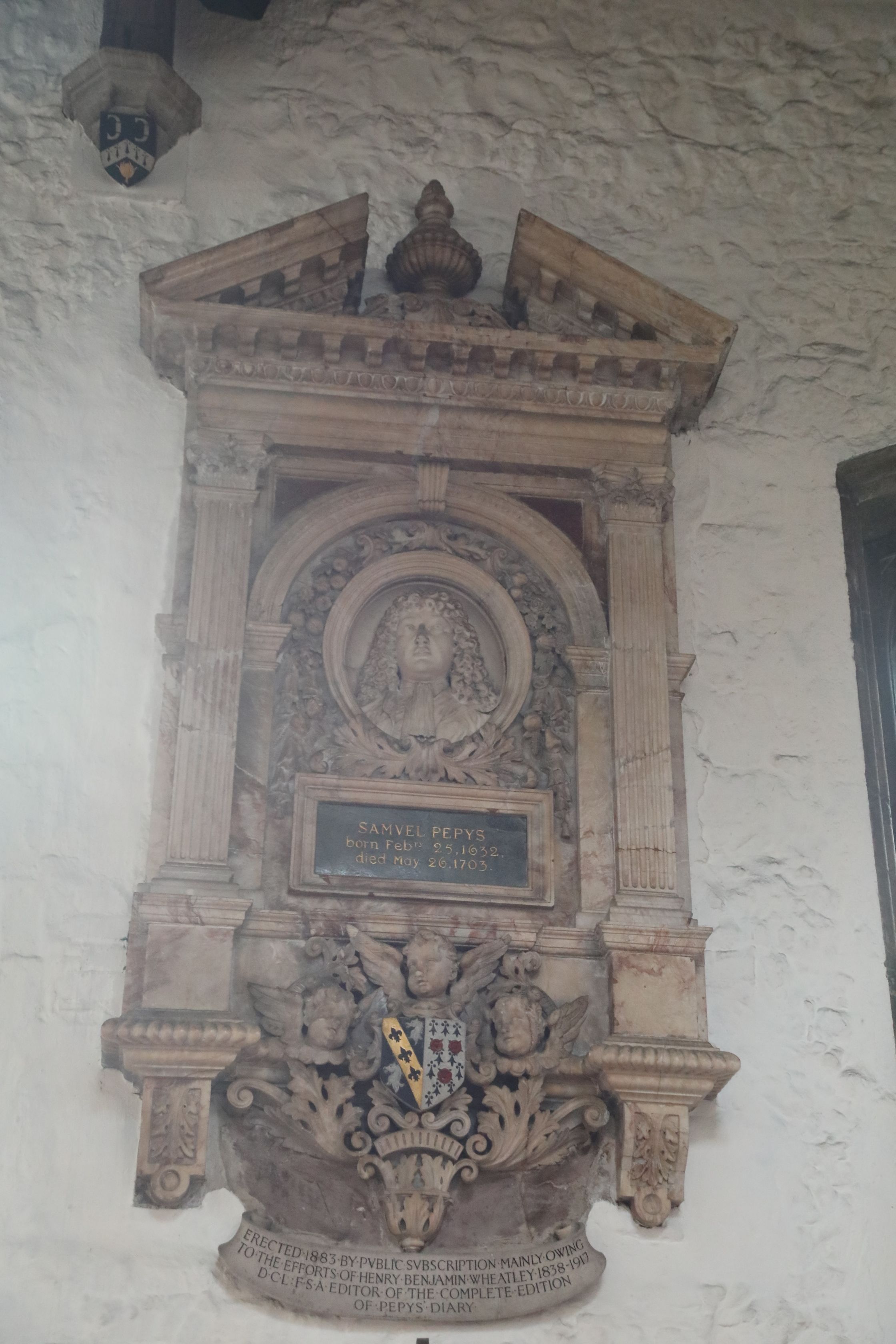Diarist. Secretary to the Admiralty. Born the son of Margaret Kite and John Pepys, a tailor, in London, the fifth of eleven children. In 1642, the political climate, his indifferent health, and fear of the plague, which eventually killed several of his brothers, precipitated his removal to the country, and he was raised by an uncle in Huntingdonshire. He attended the Grammar School at Huntingdon, and by the end of the English Civil War, he returned to London to attend St Paul's School, and subsequently, Magdalene College, Cambridge. He took a position as clerk in the offices of George Downing, to support a new wife, and it was during that time, on January 1, 1660, he began his diary. A few months later, his cousin, Edward Montagu, Earl of Sandwich took him on as secretary as he sailed with the fleet which brought Charles II back from exile. Through his cousin's influence, he was then appointed clerk of the acts of the navy and given an official residence. His duties in the next years expanded to include the role of justice of the peace and surveyor of naval supplies. He was, after a brief period of indulgence, determined to be meticulous in his duties, and in the keeping of his diary, which has long been regarded by scholars to be among the most important pictures of the life of Restoration London. The span of the diary covered the time of his service to the Royal Navy, the Second Dutch War of 1665, the Plague, and the Great Fire of London, before difficulty with his eyesight led to the discontinuation of the diary in 1669. In 1679, political enemies contrived to have his loyalty questioned and he was forced to resign from the Admiralty. In 1683, he was returned to public service by Charles II, as Chief Secretary to the Admiralty. He helped to carry the canopy at the coronation of James II in 1685. In 1689, after James II was deposed, he retired. In 1701, failing health led to his move from London to Clapham. He had spent his final years organizing his personal library, and corresponding with friends such as Sir Christopher Wren, Sir Isaac Newton, John Dreyden and a good many more of the prominent men of the age. Upon his death, his library of more than 3,000 volumes, including his diary, were left to Magdalene College. From 1819 to 1822, his diaries were transcribed from their original shorthand, and published in 1825. It was not until 1970, however, that a complete, unexpurgated edition was published.
Diarist. Secretary to the Admiralty. Born the son of Margaret Kite and John Pepys, a tailor, in London, the fifth of eleven children. In 1642, the political climate, his indifferent health, and fear of the plague, which eventually killed several of his brothers, precipitated his removal to the country, and he was raised by an uncle in Huntingdonshire. He attended the Grammar School at Huntingdon, and by the end of the English Civil War, he returned to London to attend St Paul's School, and subsequently, Magdalene College, Cambridge. He took a position as clerk in the offices of George Downing, to support a new wife, and it was during that time, on January 1, 1660, he began his diary. A few months later, his cousin, Edward Montagu, Earl of Sandwich took him on as secretary as he sailed with the fleet which brought Charles II back from exile. Through his cousin's influence, he was then appointed clerk of the acts of the navy and given an official residence. His duties in the next years expanded to include the role of justice of the peace and surveyor of naval supplies. He was, after a brief period of indulgence, determined to be meticulous in his duties, and in the keeping of his diary, which has long been regarded by scholars to be among the most important pictures of the life of Restoration London. The span of the diary covered the time of his service to the Royal Navy, the Second Dutch War of 1665, the Plague, and the Great Fire of London, before difficulty with his eyesight led to the discontinuation of the diary in 1669. In 1679, political enemies contrived to have his loyalty questioned and he was forced to resign from the Admiralty. In 1683, he was returned to public service by Charles II, as Chief Secretary to the Admiralty. He helped to carry the canopy at the coronation of James II in 1685. In 1689, after James II was deposed, he retired. In 1701, failing health led to his move from London to Clapham. He had spent his final years organizing his personal library, and corresponding with friends such as Sir Christopher Wren, Sir Isaac Newton, John Dreyden and a good many more of the prominent men of the age. Upon his death, his library of more than 3,000 volumes, including his diary, were left to Magdalene College. From 1819 to 1822, his diaries were transcribed from their original shorthand, and published in 1825. It was not until 1970, however, that a complete, unexpurgated edition was published.
Bio by: Iola
Advertisement
See more Pepys memorials in:
Records on Ancestry
Sponsored by Ancestry
Advertisement




